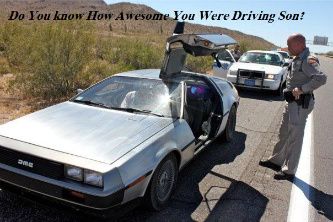I made another video trying to illustrate the problem and sent it to Bill. I am apparently the only human being on Earth who can hear the problem. However, I can say definitely that the steering wheel shakes like the handle on an old lawnmower. At higher speeds, it's more of a vibration than a shake, but that's only because the engine is turning faster.
Since there's no way of getting anyone to hear the problem, I can try to provide visual evidence of this, but I need to charge my videocamera's battery. Would it be enough to put a quarter on the air filter housing so that everyone can watch it bounce around? Maybe I could video the open door quivering like a leaf in a breeze? It's hard to show the interior of the car shaking, since it's mostly black in there.
Another problem, and maybe this is just endemic to carbureted engines: I can set the idle to 900 RPM when the engine is hot, but upon the next cold start, the fast-idle cam has the engine running at about 1,600 RPM and when I stomp on the throttle to disengage it, engine speed drops to about 700 RPM. I have to run the engine for about five minutes for the idle speed to get back up to where it was when I set it. So basically this means that I have to sit with the engine running for five minutes before I can go out and drive it with the air conditioning on. (This will be lots of fun in south Florida summers...)
None of this was happening when I first got the car back from Bill. This is the perplexing and very frustrating thing. It was all working perfectly. And then, suddenly, after sitting for several weeks, this all started happening. I don't get it. I had a leaky power valve and I replaced it, thinking it would solve the problem. It didn't. I'm back to square one.
Maybe it has always done this and I just didn't notice before. I doubt it, though.
I guess I can start pulling spark plugs and see what happens. But I want my wife to be there to call an ambulance right away if I suddenly get 40,000 volts up my arm.




 Reply With Quote
Reply With Quote






